The system shown is in limiting equilibrium. The coefficient of friction for all contanct surfaces is 1/4.
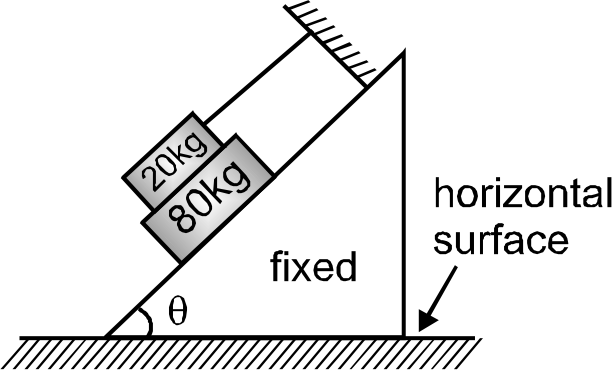
tanθ=38
Tension in the string =(1003gsinθ)N
Net frictional force on 80kg block is (80gsinθ)N
Force exerted by 20kg block on 80g block is (20gcosθ)
The correct Answer is:A, B, C
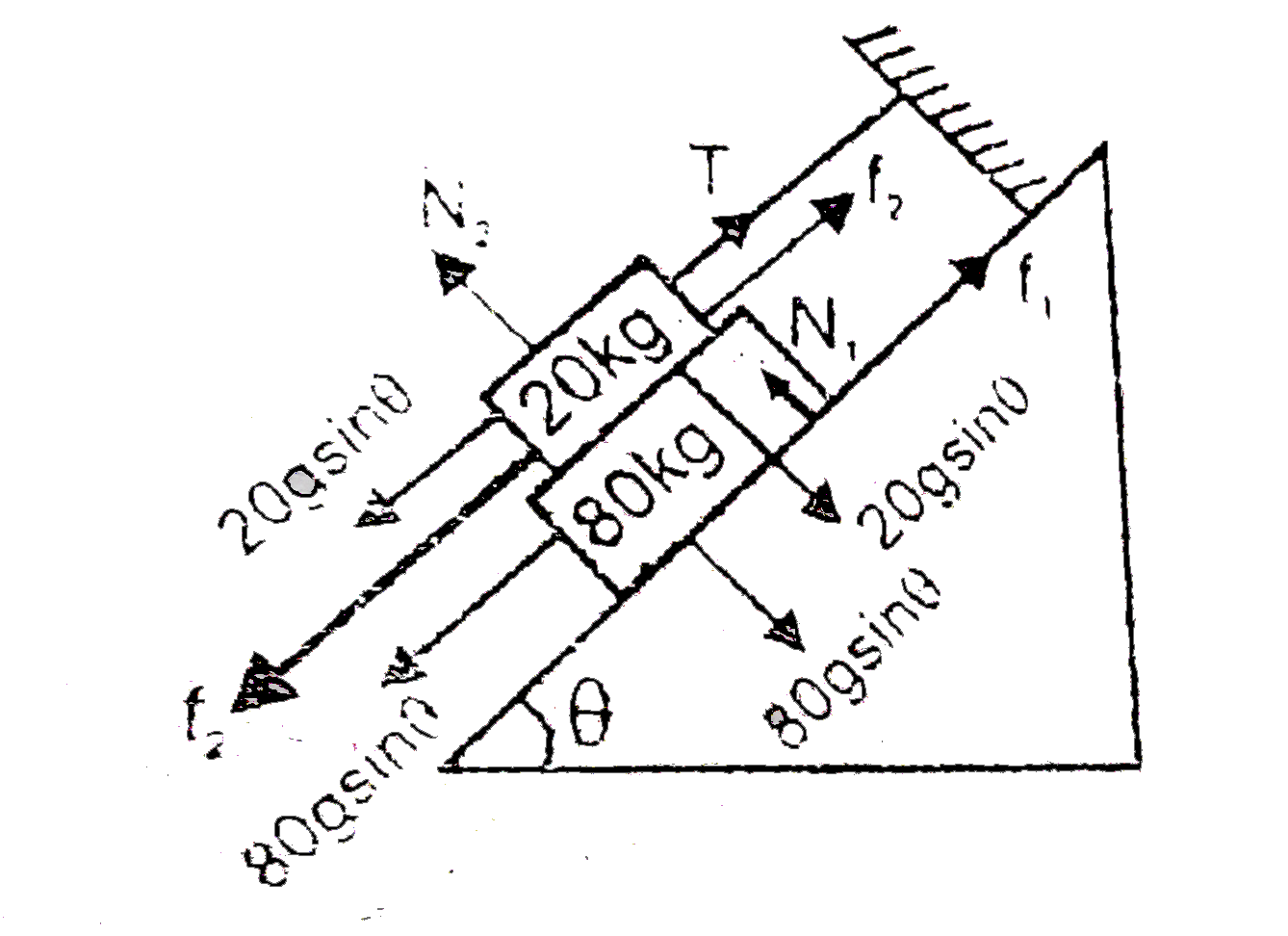
20gsinθ+f2=T
20gsinθ+μ(20gcosθ)=T
80gsinθ=μ(100gcosθ)+μ(20gcosθ)
tanθ=38
T=20gsinθ+14×20×g×83sinθ
=(1003gsinθ)N
Net friction on 80kg=f1+f2=80gsinθ
force on 80kg due to 20kg is
√(2gcosθ)2+(μ20gsinθ)2
Topper's Solved these Questions
- DAILY PRACTICE PROBLEMBook:RESONANCE ENGLISHChapter:DAILY PRACTICE PROBLEMExercise:DPP No.25
Explore 20 Videos
- DAILY PRACTICE PROBLEMBook:RESONANCE ENGLISHChapter:DAILY PRACTICE PROBLEMExercise:DPP No.26
Explore 8 Videos
- DAILY PRACTICE PROBLEMBook:RESONANCE ENGLISHChapter:DAILY PRACTICE PROBLEMExercise:DPP No.23
Explore 20 Videos
- CURRENT ELECTRICITYBook:RESONANCE ENGLISHChapter:CURRENT ELECTRICITYExercise:High Level Problems (HIP)
Explore 19 Videos
- ELECTRO MAGNETIC WAVESBook:RESONANCE ENGLISHChapter:ELECTRO MAGNETIC WAVESExercise:Exercise 3
Explore 27 Videos
Similar Questions
The coefficient of static friction between two surfaces depend on
View SolutionBlock of mass m are released from rest and they slide down the inclined surface as shown in figure. Show that the work done by the frictional forces on the blocks are same in all the cases. Also calculate the speeds with which the blocks reach point B. The coefficient of friction for all the surface is μk.
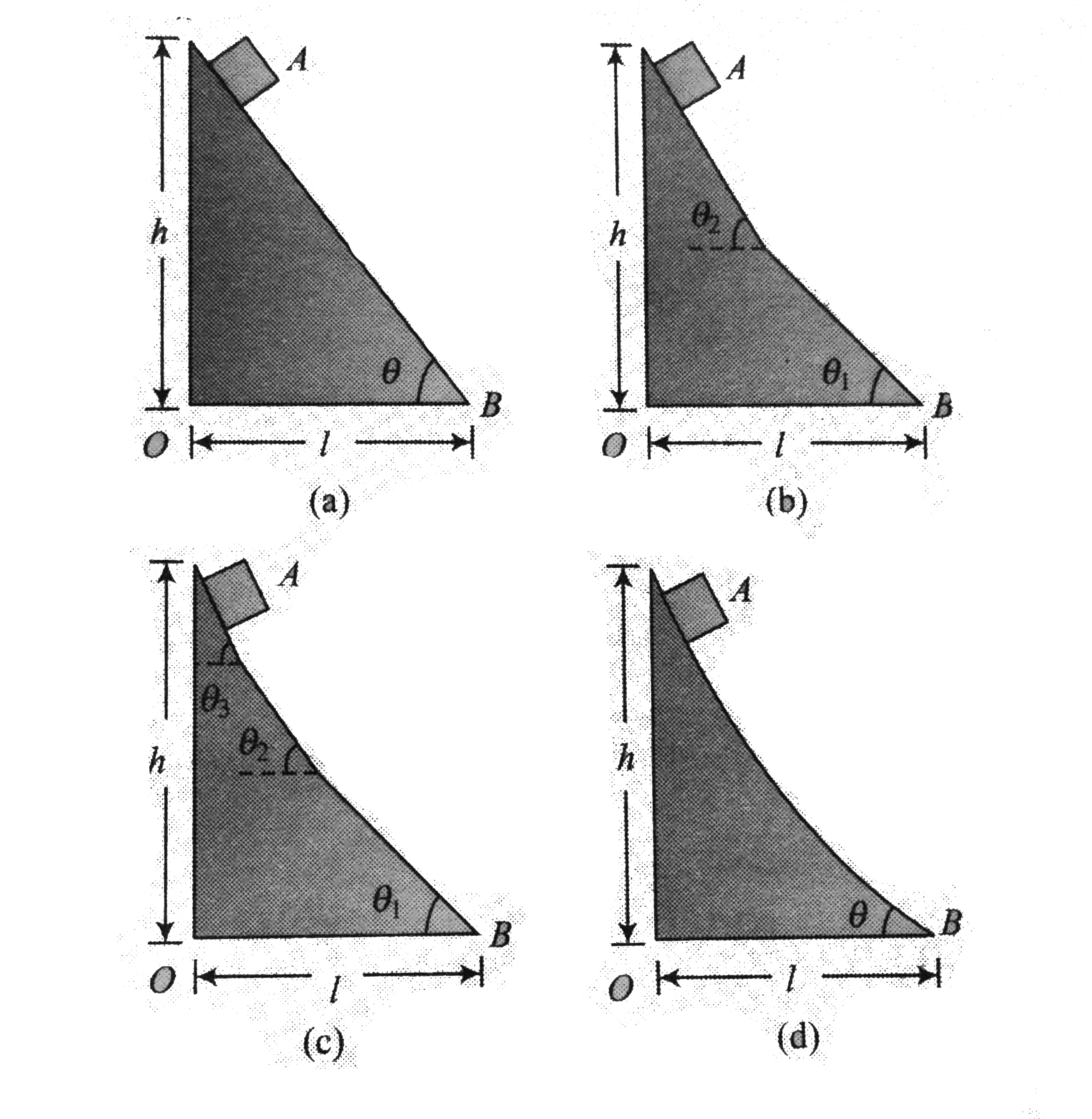
View Solution
Knowledge Check
Two blocks A and B of masses 10 kg and 15 kg are placed in contact with each other rest on a rough horizontal surface as shown in the figure. The coefficient of friction between the blocks and surface is 0.2. A horizontal force of 200 N is applied to block A. The acceleration of the system is (Take g=10ms−2)
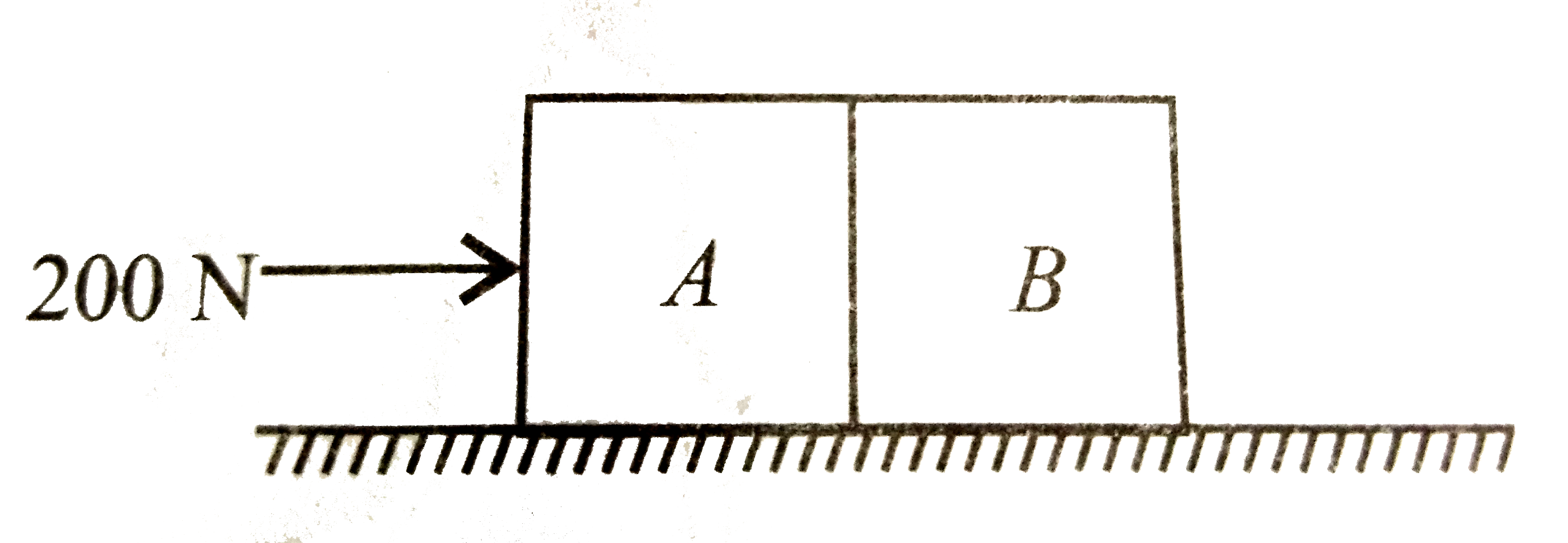 A4ms−2B6ms−2C8ms−2D10ms−2
A4ms−2B6ms−2C8ms−2D10ms−2A trolley of mass 20 kg is attached to a block of mass 4kg by massless string passing over a frictionless pulley as shown in the figure. If the coefficient of kinetic friction between trolley and the surface is 0.02, then the accderal ion of the trolley and block system is (Takeg=10ms−2)
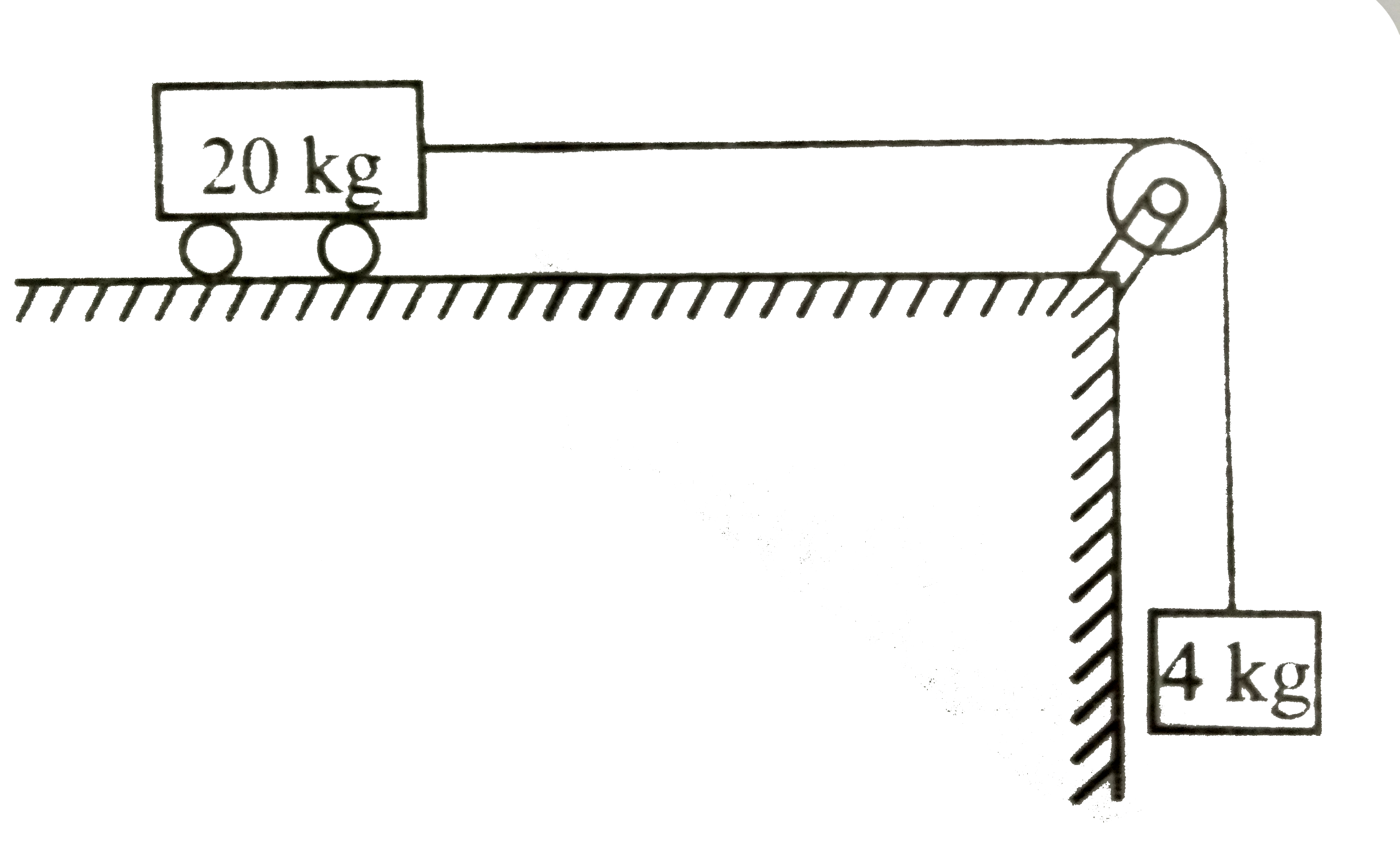 A1ms−2B2ms−2C1.5ms−2D2.5ms−2
A1ms−2B2ms−2C1.5ms−2D2.5ms−2

Three blocks are connected as shown in the figure. Valculate the minimum force required to move the body with constant velocity. The coefficient of friction at all surfaces is 0.25.
View SolutionWhat is the acceleration of the block and trolley system shown in if the coefficient of kinetic friction between the trolley and the surface is 0 .04 ? What is the tension in the string ? Take g=10ms−2 Neglect the mass of the string
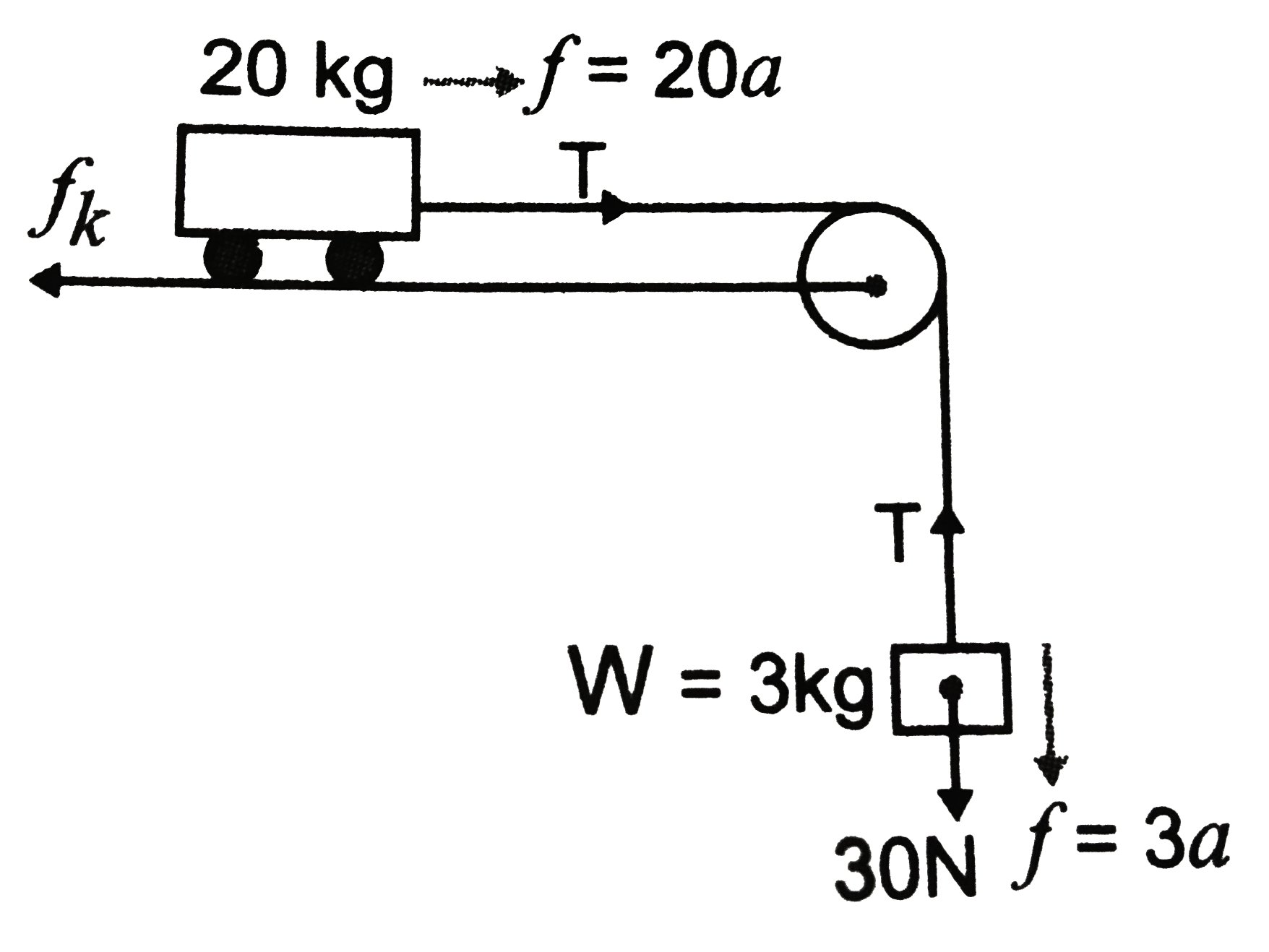 .
.
View SolutionA mass placed on an inclined place is just in equilibrium. If μ is coefficient of friction of the surface, then maximum inclination of the plane with the horizontal is
View SolutionA force of 100 N is applied on a block of mass 3 kg as shown in figure. The coefficient of friction between the surface and the block is 14 .Then the friction force acting on the block is
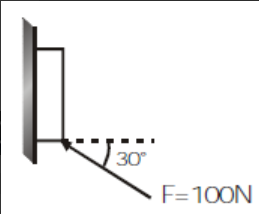
View SolutionA homogeneous chain lies in limiting equilibrium on a horizontal table of coefficient of friction 0.5 with part of it hanging over the edge of the table. The fractional length of the chain hanging down the edge of the table is
View SolutionCalculate acceleration of block and trolly system shown in figure. Coefficient of kinetic friction between trolly and the surface is 0.05, mass of string is negligible and no other friction exists

View Solution
